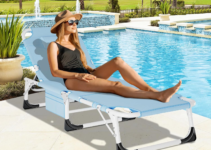Struggling to find the best UV for tanning? Look no further!
As a certified tanning expert, I’ve researched and consulted with dermatologists to bring you the safest and most effective UV options.
Achieving a flawless sun-kissed glow requires the right UV index, and it’s important to choose products that enhance your tan without compromising your skin’s health.
Read on for my top recommendations on the best UV for tanning and safe tanning products.
This post contains affiliate links. We earn a commission if you purchase after clicking on our links.
Table of Contents
Key Takeaways
- The best UV for tanning should balance effectiveness and safety, ensuring a perfect tan without damaging skin damage.
- Tanning products, like tanning lotions and sunscreens, can help enhance your tan while protecting your skin from harmful UV rays.
- Consult a dermatologist or tanning expert to determine the ideal tanning method and duration for your unique skin type.
What is the Best UV for Tanning?
The higher the UV Index, the faster your skin can get tan. Ensure the UV Index is not over 5, which could cause skin sensitivity and lead to burns.
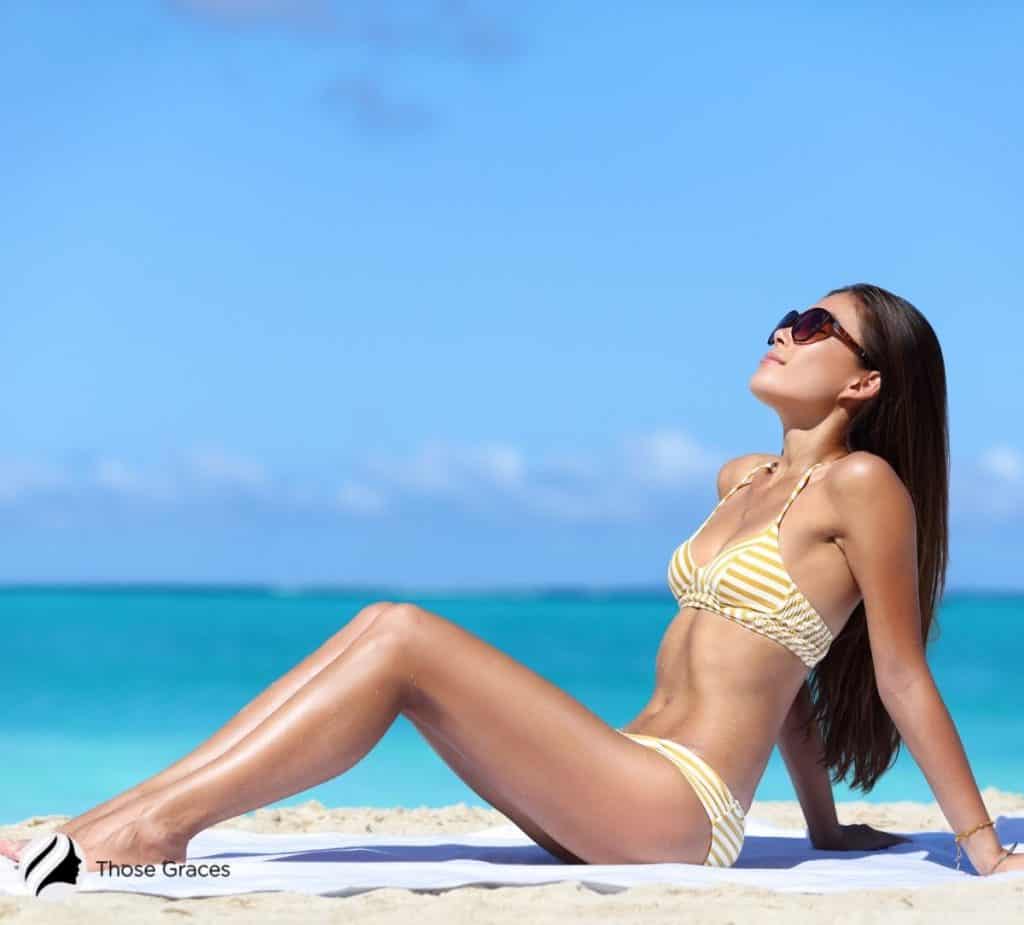
The best UV index for tanning is between 2 and 5, depending on your skin type. Anything above is not recommended, as it can increase the risk of skin cancer.
Want To Know How To Tan Faster? — UVA and UVB Light
Your skin requires UVA and UVB light [4] for an effective tan. UVA light darkens the pigment cells within your skin, whereas UVB light causes your skin to produce pigment cells or it looks brighter.
I recommend you only consider tanning during moderate UV conditions. Otherwise, harmful sun rays could affect you.
Can You Tan in UV Index 1?
If you’re wondering whether you can get a tan with a UV index of 1, the answer is no.
A UV index of 1 means you’re not exposed to much sun, so it would take a long time to see any tanning effect on your skin.
You would need to spend several hours in the sun to notice a slight difference in your skin color.
Can You Tan in UV Index 2?
Getting a tan [5] under UV 1 or 2 is unlikely, as this shows low exposure, and your skin burns minimally. It takes up to 60 minutes for the sun to affect your skin cells to get tan under this index.
Can You Tan in UV Index 3?
UV index 3 is not a high enough UV index to tan. It’s possible to get a tan with this UV index, but it tans little. Plus, it will take approximately 45 minutes for the tan to appear.
Can You Get a Tan With a UV Index of 4?
Yes, you can tan with a UV index of 4, but it will take longer. You need to be in the sun for extended periods.
A UV index of 4 means a low risk of harm from unprotected exposure to sunlight. So don’t worry! Tanning under a UV index of 4 rarely burns your skin.
Can You Get Tan With a UV Index of 6?
An index level of 6 means there is high exposure to the sun. It implies that sunburn could occur after just a few minutes in the sun — here, the tanning process takes up to 15 to 20 minutes.
Next, check out my 3 recommended favorites to protect my smooth skin from the sun…
For some great tan-through swimwear, check out this video:
What is the UV index & How should you Use It?
The UV Index [1] measures the intensity of the ultraviolet radiation reaching the ground.
It is a valuable tool to predict how much time people can spend outside before applying sunscreen.
The UV Index Range
The index indicates the strength of UV rays in a particular location. It is measured on a scale from 0 to 12, with 0 being no exposure to UV radiation and 12 being extreme exposure.
How to Use the UV Index Effectively
Before spending a considerable amount of time outdoors, be sure to check the UV index.
This information can be found on weather websites, apps, or local news sources. Since factors like cloud cover and time of day can influence the UV index, it’s wise to check for updates periodically.
Once you’re aware of the current UV index, take the necessary precautions to shield your skin from the damaging effects of UV radiation.
Wear protective clothing like hats and long-sleeved shirts to achieve this, and apply broad-spectrum sunscreen with a high SPF.
More so, seek shade whenever possible, and avoid outdoor activities during peak UV hours!
I always stay informed and take these measures to reduce my risk of skin damage and enjoy my time outside safely.
Now, dive deep into the next section with more on the types of UV rays and what to watch out for…
Here is an excellent video on what is a UV index:
READ MORE: How to Tan Outside Privately?
3 Types of UV Rays: What to Avoid
UV rays are electromagnetic waves that have a shorter wavelength than visible light. The sun emits UV rays in the form of light and heat.
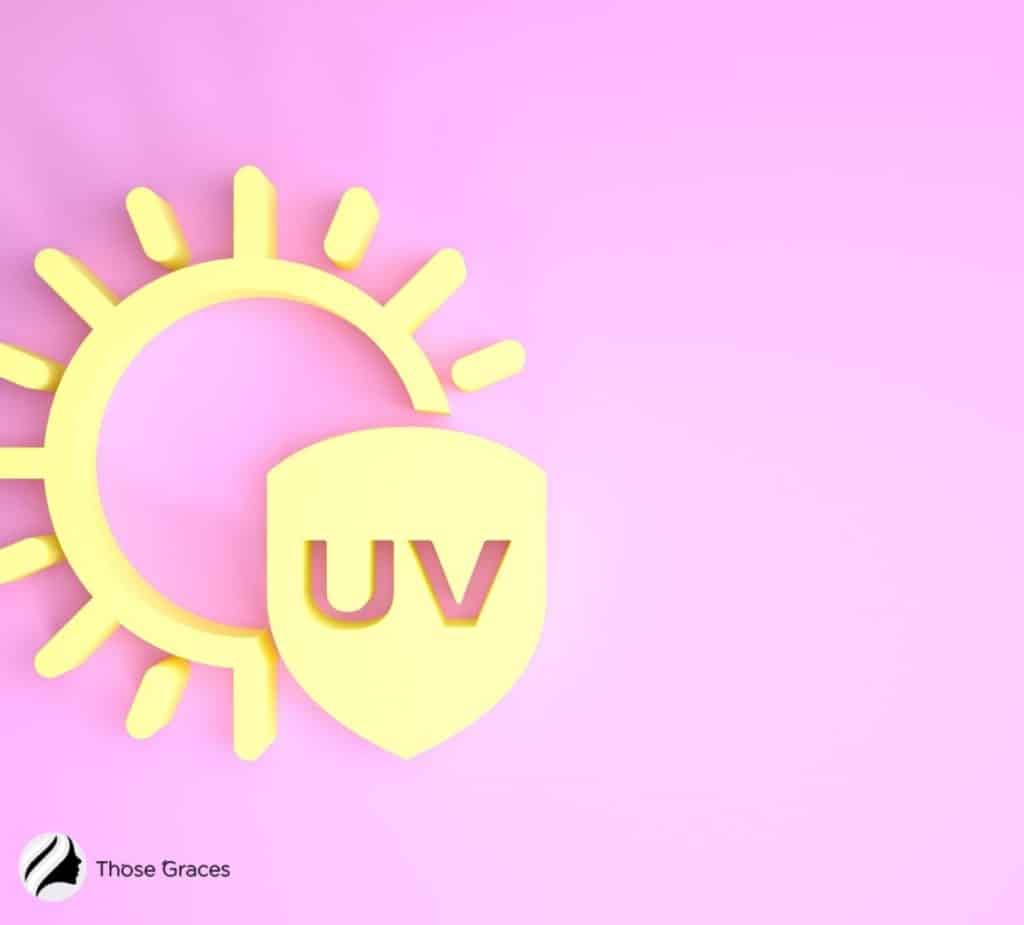
Researchers [2] have claimed that “The most common modifiable risk factor for skin cancer is exposure to ultraviolet radiation (UV),†which stresses the fact that safety measures should be taken.
Sunlight and artificial sources, such as mercury lamps and tanning beds emit UV rays. Even though UV radiation is invisible to the human eye, it can cause damage to the skin.
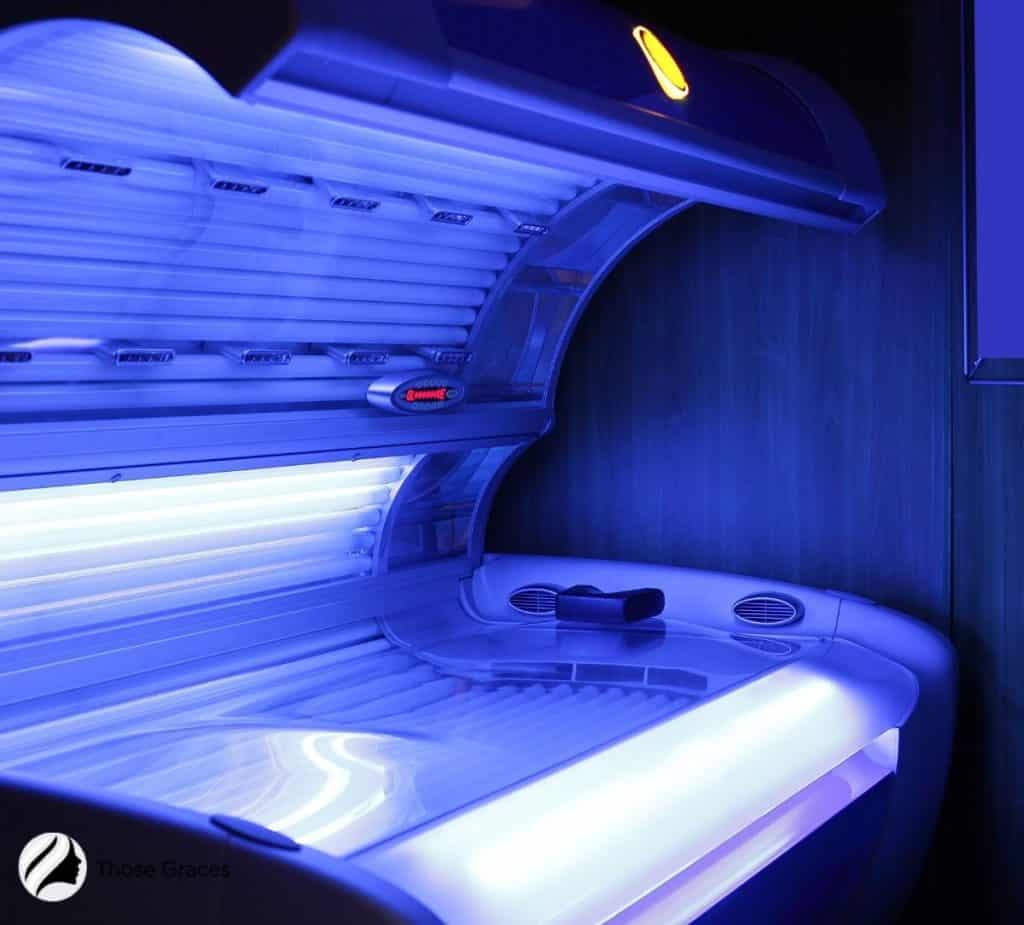
So it’s essential to protect yourself from UV rays because they are linked to premature aging, the risk for skin cancer, cataracts, and other vision problems.
Here, I explain 3 types of UV rays (UVA, UVB, and UVC) and how to hit them with an iron fist:
1. Ultraviolet A (UVA)
UVA is the most common type of UV radiation and can cause skin aging and wrinkling.
UVA rays can also penetrate deep into the skin and cause damage to the underlying tissues.
Protecting your skin from UVA radiation is essential, even on cloudy or overcast days when UVB rays might be blocked.
To safeguard your skin from UVA radiation, buy a broad-spectrum sunscreen with an SPF of 30 or higher.
I always wear protective clothing, such as long sleeves and hats, and seek shade during peak UV hours – so should you!
2. Ultraviolet B (UVB)
UVB radiation is responsible for sunburns and can also cause skin cancer.
UVB rays are at their strongest during midday and in the summer months, but they can still cause damage at other times of the year.
Protecting your skin from UVB radiation is crucial to reduce your risk of skin cancer.
Use broad-spectrum sunscreen with an SPF of 30 or higher to protect yourself from UVB radiation.
3. Ultraviolet C (UVC)
UVC is the most dangerous type of UV radiation, but thankfully, it’s absorbed by the Earth’s atmosphere and doesn’t reach the planet’s surface.
For outdoor activities, UVC radiation isn’t a concern. However, UVC radiation can be produced by artificial sources like welding arcs and germicidal lamps.
It’s important to take proper precautions to avoid harm when working with these types of equipment.
Check out this video of the best outdoor tanning lotions you need to check out:
UV Radiation
Ultraviolet radiation is a type of electromagnetic radiation with a wavelength shorter than visible light and known as UV.
It can be found in sunlight and artificial sources, such as mercury lamps and tanning beds. Even though UV radiation is invisible to the human eye, it can cause damage to the skin.
So it’s important to protect yourself from UV rays because they are linked to premature aging, the risk for skin cancer, cataracts, and other vision problems.
Here is an excellent video on what is a UV index:
Make sure to check our list of the best tanning lamp you can use.
List of UV Index
The index [3] is expressed as an index number on a scale from 0 to 12, with 12 being the highest.
The index number is calculated using measurements of erythemal ultraviolet radiation at wavelengths between 280 and 400 nanometers.
- 0 to 2: low danger from sun rays.
- 3 to 5: moderate risk of harm from sun exposure.
- 6 to 7: high risk of harm from sun exposure.
- 8 to 10: very high danger from sun rays.
- 11 or more: extreme danger.
Want to avoid Hives from Tanning Bed and treat any rash? Watch this video below:
What Affects Daily UV Index?
Various factors can affect the daily UV Index.
These include the time of day, season, altitude, and cloud cover.
For example, UV radiation is most substantial when the sun is at its highest point in the sky, typically between 10 a.m. and 4 p.m. during daylight saving time.
In addition, UV radiation is more intense at higher altitudes due to the thinner atmosphere, which provides less protection from the sun’s rays.
Finally, cloud cover can significantly affect the UV Index, as clouds block or scatter UV radiation.
It is important to check the daily UV forecast before spending time outdoors, as fluctuations in the UV Index can occur due to these factors.
By checking the UV forecast, you can determine the best time to go outside and take the necessary precautions to protect yourself from harmful UV radiation.
Skin Phototype
Skin phototype refers to an individual’s skin type, ranging from Type I to Type VI.
Skin phototypes are based on a person’s skin color, reaction to sun exposure, and susceptibility to sunburn.
Those with fair skin, light-colored eyes, and light-colored hair typically have a lower skin prototype, While those with dark skin, dark eyes, and dark hair typically have a higher skin phototype.
In addition, people with different skin phototypes must adapt their sun protection strategies accordingly.
For example, individuals with a lower skin phototype should wear sunscreen with a higher SPF, seek shade, and limit their time in the sun.
On the other hand, individuals with a higher skin phototype may require less sunscreen and can spend more time in the sun without risking sunburn.
In summary, understanding the UV Index and skin phototype can help individuals protect themselves from the harmful effects of UV radiation.
By checking the daily UV forecast and adapting sun protection strategies according to skin phototype, individuals can enjoy the outdoors while minimizing their risk of skin damage and other health issues.
Top 3 Sun Protection Products To Stay Safe
As someone who loves spending time outdoors, I know how important it is to protect your skin from the sun’s harmful UV rays.
I’m thrilled to share my top recommendations for sun protection products to help you stay safe and enjoy your time outside.
#1 Effective Sunscreen for Optimal UV Protection
Choosing a broad-spectrum sunscreen that protects against UVA and UVB rays is crucial.
Dermatologists recommend using a product with an SPF of at least 30, so look for that on the label.
My personal favorite is the Neutrogena Ultra Sheer Dry-Touch Sunscreen SPF 30. It goes on smoothly and doesn’t leave a greasy residue.
No products found.Mineral sunscreens are a great choice if you have sensitive skin or prefer more natural options.
No products found.These sunscreens use zinc oxide or titanium dioxide as their active ingredients, providing a physical barrier against UV rays.
Another favorite is the Blue Lizard Australian Sunscreen Sensitive SPF 30+.
No products found.Neutrogena Ultra Sheer Dry-Touch may cause slight irritation if you have sensitive skin.
The Blue Lizard Australian Sunscreen’s mineral formula can sometimes leave a noticeable white cast, which may not be ideal for everyone.
Now, let’s move on to sun-protective clothing.
#2 Stellar Sun-Protective Clothing: A Stylish and Effective Defense
Ultraviolet Protection Factor (UPF) rated clothing offers additional protection against harmful UV rays.
Look for garments with a UPF rating of at least 30 for effective sun protection. I personally crave the Coolibar UPF 50+ Women’s Sun Shirt for its lightweight, breathable fabric and stylish design.
No products found.When it comes to headwear, a wide-brimmed hat is essential for extra shade and protection. I recommend choosing a hat with a brim of at least 3 inches to cover your face, neck, and shoulders.
A great example is the Columbia Bora Bora Booney Hat. I’ve bought mine, and let me tell you, this baby is a great choice for its comfortable fit, excellent coverage, and incredible look.
No products found.#3 Essential Sun-Safety Accessories: Sunglasses & Sun Umbrellas
Lastly, don’t forget about accessories like sunglasses and sun umbrellas.
Invest in sunglasses that block 100% of UVA and UVB rays, and look for a wraparound design for increased protection from sunlight coming in from the sides.
I love the Ray-Ban RB2132 New Wayfarer Polarized Sunglasses for their classic look and superior protection.
No products found.For a perfect solar-fighting militia, add a sparkling sun umbrella or parasol. Not only are they great for portable shade, but they help reduce UV exposure outdoors.
The Sport-Brella Portable All-Weather Sun Umbrella is an excellent option with its UPF rating for added sun protection.
No products found.By using these sun protection products while enjoying the great outdoors, you’ll make smart decisions and take the necessary steps to keep your skin safe and healthy.
No products found.So, stay safe and enjoy the great outdoors – but don’t forget to dive into the Safety Measure first!
ALSO READ: How Long Does it Take to Get a Tan?
6 Tips For Tanning Safely & Keep Healthy Skin
Did you know that skin protection while tanning is just as important as achieving that perfect glow?
As a tanning expert, I’m excited to share the latest safety measures for tanning in 2023 to help you get that healthy sun-kissed look while keeping your skin safe.
To unleash the magic, check out these 6 tips [5] you should always consider about the UV Index while tanning:
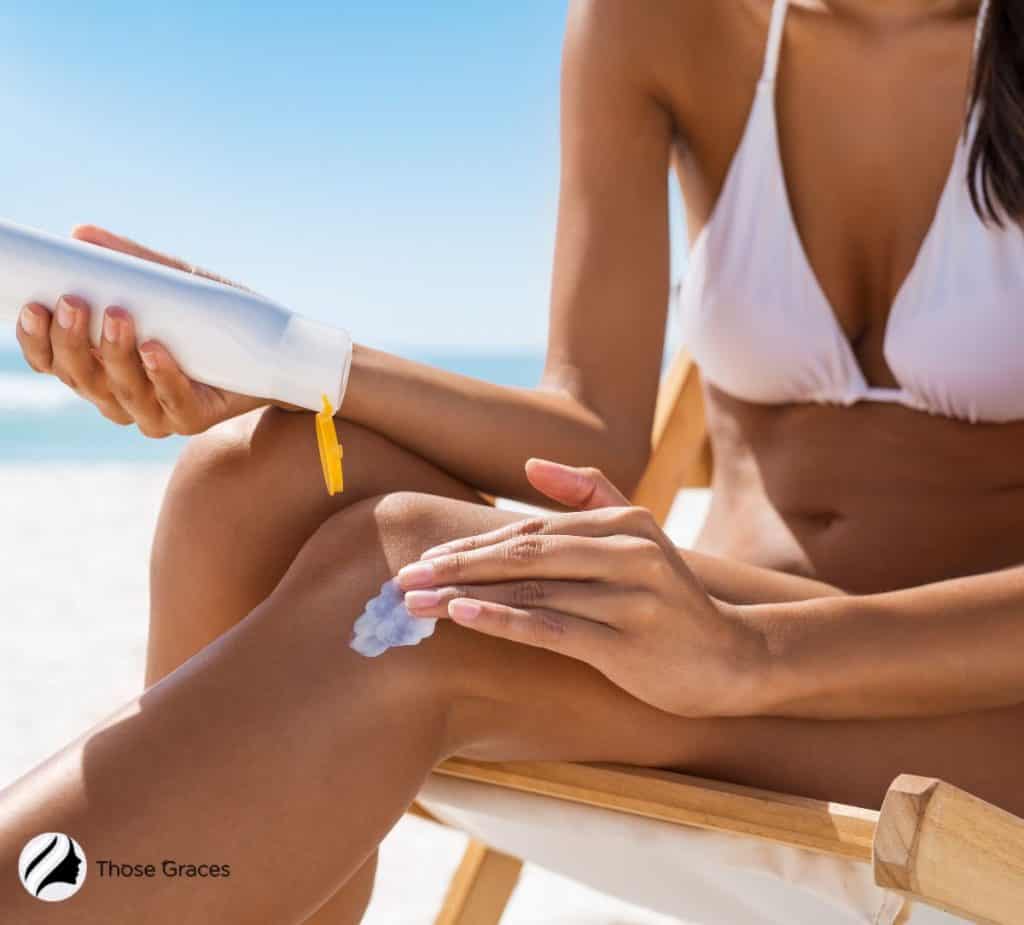
- Use the correct sunscreen or tanning lotion daily. Dermatologists [6] have recommended an SPF of at least 30.
- Use a broad-spectrum UVA/UVB sunscreen that protects against UVA and UVB rays.
- Be mindful of your skin tone. If you have fair skin that burns easily, use a lower SPF.
- Avoid peak time of day when the sun is strongest (between 11 am—3 pm).
- Monitor the UV Index: Stay informed about the UV Index in your area, and tan when the index ranges between 2 and 5.
- Use tanning alternatives: Try safer tanning options such as self-tanners, spray tans, gradual tanning lotions, tanning towelettes, and temporary bronzers.
I recommend following these safety measures to minimize the risk of skin damage and other health issues associated with excessive UV exposure.
These tips allow you to enjoy a beautiful tan and a healthy summer. Stay safe, and happy tanning!
READ MORE: How Long Does it Take to Tan on a Cloudy Day?
FAQs
Does a higher UV mean a better tan?
But will a sunburn turn into a tan? That may be unlikely.
Does UV affect Tanning?
How to reduce UV exposure?
How long should you tan with a UV Index of 9?
Conclusion
When it comes to the best UV for tanning, you need to be wise – here’s the nutshell version:
Many people are concerned about the harmful effects of UV tanning. But, it is essential to remember that you should not overdo it.
Now, you know the UV tanning index and all the necessary precautions to take while tanning.
The best UV for tanning is the one that offers the most amount of protection from the sun. It should also be able to provide the best distribution of UV light.
Did you find my advice helpful? Comment and brag about it on social media and help everyone achieve a perfect tan safely!
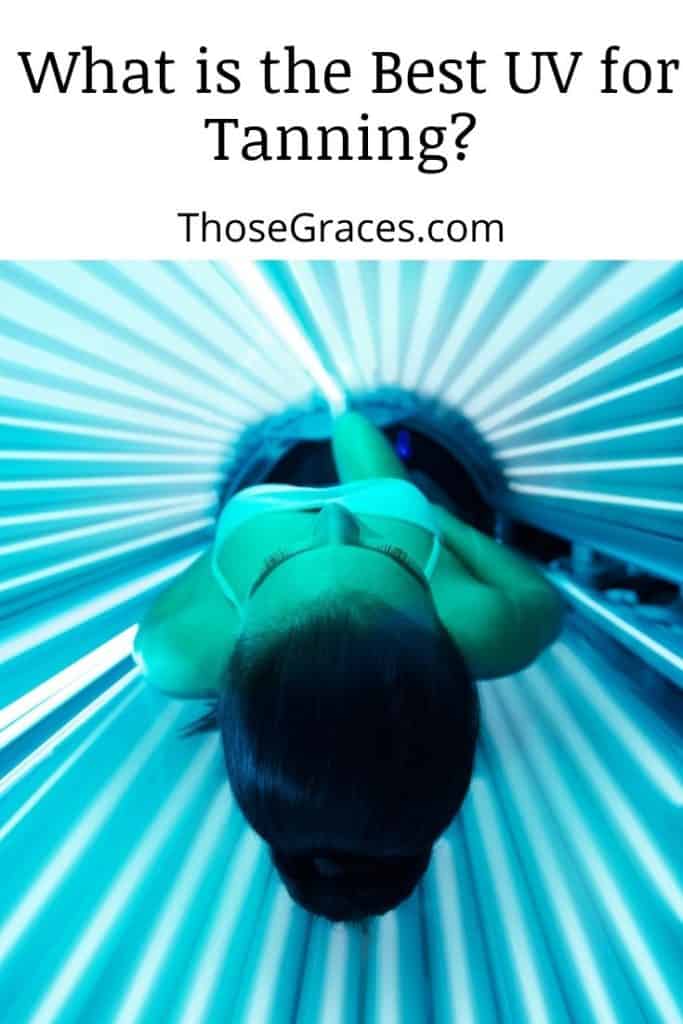
References
- 1. World Health Organization. Radiation: The ultraviolet (UV) index [Internet]. www.who.int. [cited 2022 Mar 3]. Available from: https://www.who.int/news-room/questions-and-answers/item/radiation-the-ultraviolet-(uv)-index#:~:text=The%20UVI%20is%20a%20measure
- 2. Watson M, Holman DM, Maguire-Eisen M. Ultraviolet Radiation Exposure and Its Impact on Skin Cancer Risk. Seminars in Oncology Nursing [Internet]. 2016;32:241–54. Available from: https://www.ncbi.nlm.nih.gov/pmc/articles/PMC5036351/
- 3. US EPA,OAR. UV Index Scale | US EPA [Internet]. US EPA. 2019. Available from: https://www.epa.gov/sunsafety/uv-index-scale-0
- 4. Dale Wilson B, Moon S, Armstrong F. Comprehensive Review of Ultraviolet Radiation and the Current Status on Sunscreens. The Journal of Clinical and Aesthetic Dermatology [Internet]. 2012;5:18–23. Available from: https://www.ncbi.nlm.nih.gov/pmc/articles/PMC3460660/
- 5. World Health Organization, World Meteorological Organization, United Nations Environment Programme, International Commission on Non-Ionizing Radiation Protection. U V I N D E X A Practical Guide [Internet]. 2002. Available from: https://www.who.int/uv/publications/en/UVIGuide.pdf
- 6. American Academy of Dermatology Association. Sunscreen FAQs [Internet]. www.aad.org. Available from: https://www.aad.org/public/everyday-care/sun-protection/sunscreen-patients/sunscreen-faqs#:~:text=Dermatologists%20recommend%20using%20a%20sunscreen

